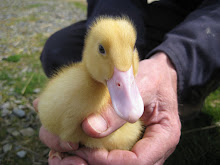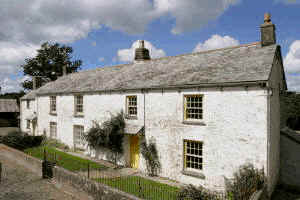 Hedging is a complicated business. There are many opinions on it; to cut or not to cut, and if you cut, then how much and when. There are numerous styles of laying a hedge depending on the locality, and certain approaches favour particular species of wildlife. It is verboten to neatly cut, mechanically flail, or chop indiscriminately at your hedge during the months of March through July as you would certainly disturb nesting birds, and January and February are the preferred lopping times if possible.
Hedging is a complicated business. There are many opinions on it; to cut or not to cut, and if you cut, then how much and when. There are numerous styles of laying a hedge depending on the locality, and certain approaches favour particular species of wildlife. It is verboten to neatly cut, mechanically flail, or chop indiscriminately at your hedge during the months of March through July as you would certainly disturb nesting birds, and January and February are the preferred lopping times if possible.As the land here is, as the optimistic estate agent put it "drought resistant", it has to be done before waterlogging sets in and the tractor with its heavy flail makes irredeemable grooves in the ground, so this is the week for the cutting of selected hedges.
The hedges that were so beautifully laid last winter get a gentle trim. Those to be laid this winter are sided up to enable the hedgelayer reasonable access to his target, and across the farm about half of the hedges will get a haircut this year, allowing the rest to grow tall before it's their turn next year. Not cutting everything in one year is important for retaining diversity of habitat and to make sure I have enough blackberries for jam-making and such (no, that's not included in cross compliance but it's important to me and anyone who visits in the expectation of chomping on scones and jam). And then there are the three hedges that have very high environmental value status - they have dormice - which won't be touched until January or February to ensure hibernation is not curtailed. There are also a few good hedges that will be left for the foreseeable future, and are being allowed to grow big and bushy and dense.
The process of preparing for all this is not easy. All the hedgerow trees carefully planted last winter have had their high visibility orange markers checked so that they don't fall prey to the flail. Trying to do this in early autumn was a complete waste of time as leaves obscured all new planting from view, and the late leaf drop has only just revealed the young saplings. Heated debates have been had about which 50% of hedges to cut and which to leave. Even those fields that are to be left need to have their gateways trimmed so that tractors and trailers can move across the farm and I don't knock myself out as I daydream whilst walking the dogs through what my memory rather than my eyes anticipates as a gap.
Devon hedges are bizarre things, most of them being laid on top of earthbanks. I cannot get a definitive answer as to why this is, unless Devon farms used to house particularly tall beasts that would not be contained by hedge alone. I have absurd visions of giraffe and elephant roaming these parts in medieval times when the field patterns and boundaries were determined. Someone must have the answer.

















8 comments:
I presume you're not referring to hedgefunds, Mopsa?
Now that, Baron, is a whole different gaggle of geese.
Believe me, I hear what you say!
Just maybe they have more in common than you thought. Think very laterally here.
The money markets just confuse me and always have. The future is in pork bellies, and all that malarkey. My freezer holds pork bellies, of that alone I am sure.
As a townie, but convinced environmentalist, it's very easy to just assume that farmers don't have that much interest in stuff like hedges.
Then I read all this lovely stuff about the hedges you laid last year and the ones you're going to do this year and these ones must be left for a bit because of the dormice and and and.
It shouldn't have come as a surprise, but it did and it was lovely. And draws attention to the rather blinkered view I have of things outside my immediate knowledge.
Rob, it should cheer you that many farmers take all this very seriously, and even those who would rather not are tied to cross compliance rules if they want their single farm payment subsidy...but because we are in Higher Level Stewardship it has to be taken particularly seriously (or perhaps its because we are willing to take it seriously we are in HLS)although sadly not all farmers who do take it seriously can access HLS). It's a complicated world as I'm finding out every day.
Aargh - I am guilty of unwitting plagiarism - I nicked Paula's "hedging your bets" title without realising and have now made amends - mea culpa!
See here for the original
http://locksparkfarm.wordpress.com/2007/10/28/hedging-your-bets/
Post a Comment